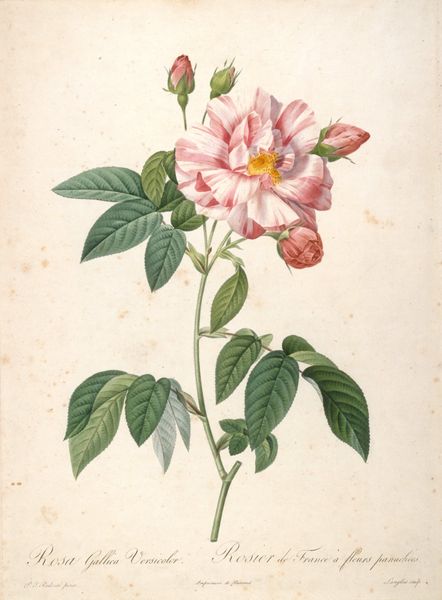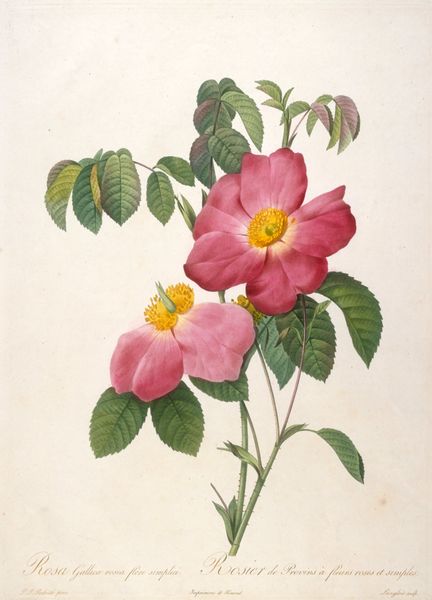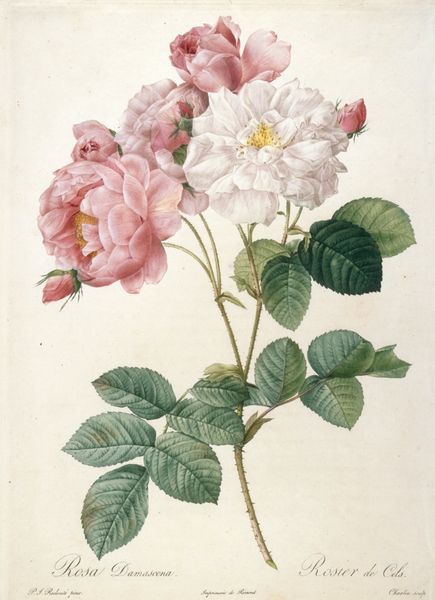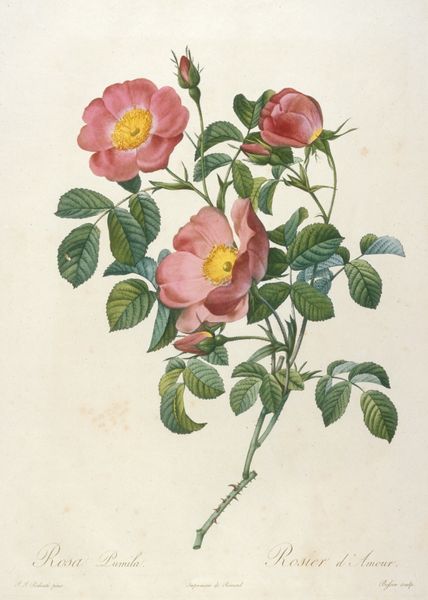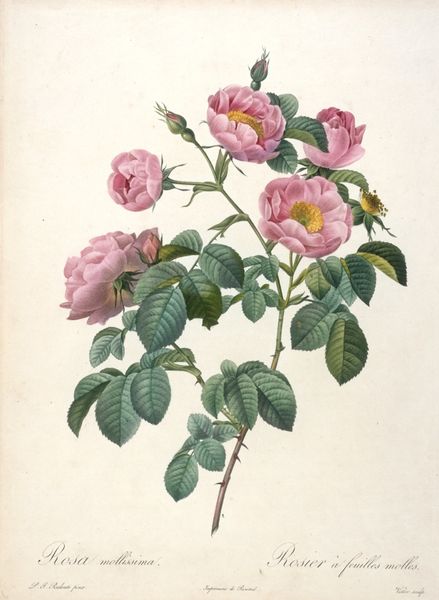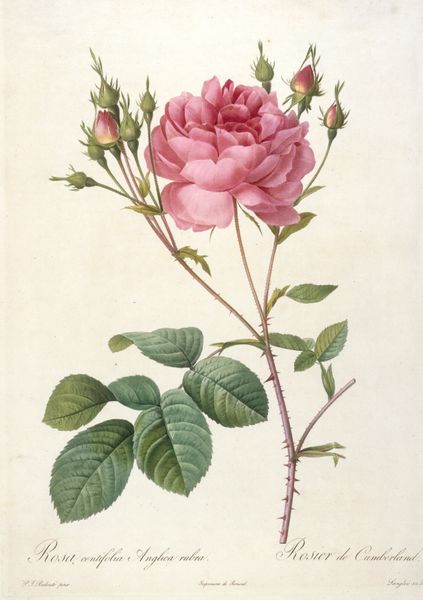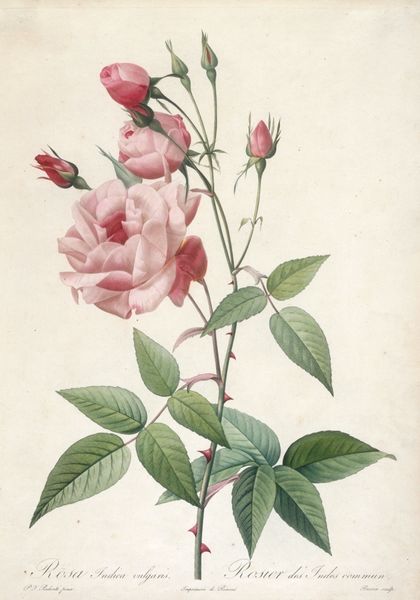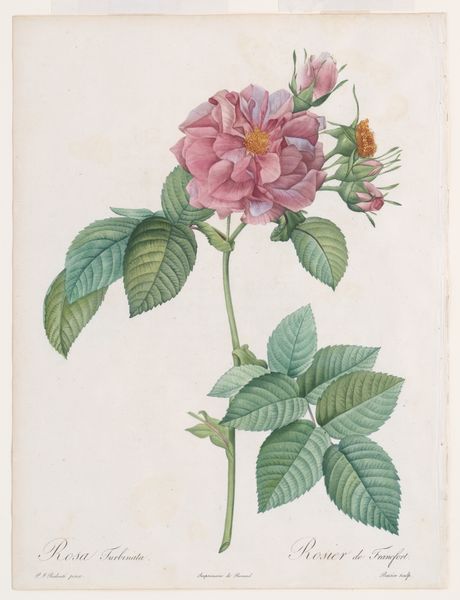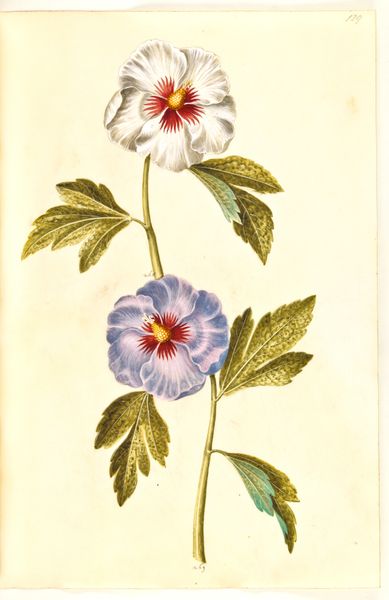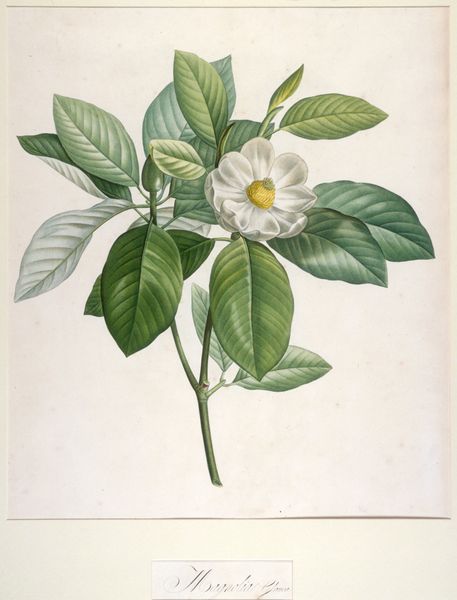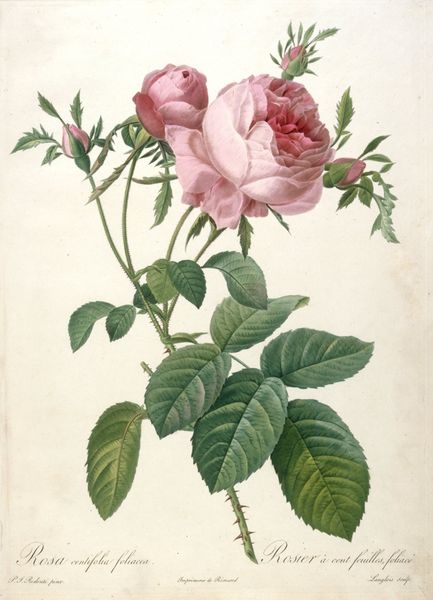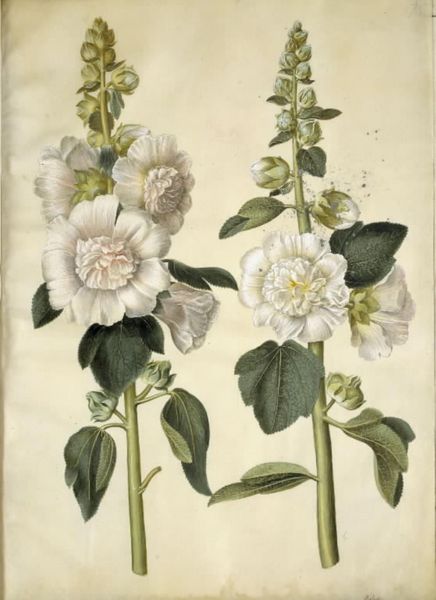
Rosa damascene variegata (Rosebush of York and Lancaster) 1817 - 1824
0:00
0:00
drawing, print, paper, watercolor
#
drawing
# print
#
landscape
#
botanical illustration
#
paper
#
watercolor
#
botanical drawing
#
watercolour illustration
#
botanical art
#
watercolor
Dimensions: 14 x 10 1/4 in. (35.56 x 26.04 cm) (plate)
Copyright: Public Domain
Curator: My goodness, that's delicate. Like looking at a blush caught in watercolor. The subtle striations of pink…almost hesitant. Editor: Indeed. What we have here is "Rosa damascene variegata (Rosebush of York and Lancaster)," a work that blossomed, shall we say, between 1817 and 1824. Curator: A very slow blooming. Editor: The medium involves both drawing and printmaking, predominantly using watercolors on paper, offering a scientific kind of botanical record. Curator: It feels less clinical than some. Maybe it's the soft imperfections. Look at how some of the leaves have those brownish spots; they tell a story. Almost as if it's saying, "Yes, beauty, but fleeting." Do you think it’s about the War of the Roses with the contrast between colors in this unique flower? Editor: I do! The rose itself became a symbol after the Battle of Bosworth Field which politically reconciliated the English royal houses of Lancaster and York. The botanical accuracy marries politics of the period with art quite seamlessly, making this flower a potent national symbol. Curator: It’s amazing. Almost more a portrait than just a flower. The placement…it makes me feel as though I should see it in somebody’s home. It evokes intimacy, a careful tending. There’s a quietness, too. Editor: These botanical illustrations also democratized access to the latest scientific observations. Knowledge wasn't confined to universities; it circulated among educated society thanks to images like these. And places like Mia are a big part of how these narratives are perpetuated! Curator: What a delicate, hopeful collision of art, politics, and nature's persistent dance. Makes you want to stop and smell every rose, and maybe contemplate a revolution or two. Editor: Yes. Next time you are offered roses consider who’s proffering, and who is expected to smell them. It all reveals the dynamics of its era, which, frankly, continue to repeat today.
Comments
minneapolisinstituteofart almost 2 years ago
⋮
Botanical illustrators working in the fifteenth and sixteenth centuries devoted themselves to the medicinal qualities of plants and sought to render plant structure and function as precisely as they could. Later, European explorers brought specimens back from exotic locales, and artists carefully reproduced them for an audience fascinated by new discoveries. By the eighteenth and nineteenth centuries, artists had shifted their emphasis from scientific illustration to the innate beauty of the plant or flower. The Minneapolis Institute of Arts is fortunate to possess an impressive collection of more than 2,000 botanical prints and drawings.
Join the conversation
Join millions of artists and users on Artera today and experience the ultimate creative platform.
